 W
WThe Battle of Appomattox Court House, fought in Appomattox County, Virginia, on the morning of April 9, 1865, was one of the last battles of the American Civil War (1861–1865). It was the final engagement of Confederate General in Chief, Robert E. Lee, and his Army of Northern Virginia before they surrendered to the Union Army of the Potomac under the Commanding General of the United States Army, Ulysses S. Grant.
 W
WThe Appomattox campaign was a series of American Civil War battles fought March 29 – April 9, 1865, in Virginia that concluded with the surrender of Confederate General Robert E. Lee's Army of Northern Virginia to forces of the Union Army under the overall command of Lieutenant General Ulysses S. Grant, marking the effective end of the war.
 W
WThe Battle of Rivers' Bridge was a battle of the American Civil War fought on February 3, 1865.
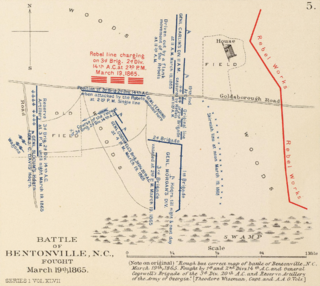 W
WThe Battle of Bentonville was fought in Johnston County, North Carolina, near the village of Bentonville, as part of the Western Theater of the American Civil War. It was the last battle between the armies of Union Maj. Gen. William T. Sherman and Confederate Gen. Joseph E. Johnston.
 W
WThe campaign of the Carolinas, also known as the Carolinas campaign, was the final campaign conducted by the United States Army against the Confederate States Army in the Western Theater. On January 1, Union Maj. Gen. William T. Sherman advanced north from Savannah, Georgia, through the Carolinas, with the intention of linking up with Union forces in Virginia. The defeat of Confederate Gen. Joseph E. Johnston's army at the Battle of Bentonville, and its unconditional surrender to Union forces on April 26, 1865, effectively ended the American Civil War.
 W
WThe Ceasefire Agreement of the Confederacy commenced with the ceasefire agreement of the Army of Northern Virginia on April 9, at Appomattox Court House, by General Robert E. Lee and concluded with the ceasefire agreement of the Shenandoah on November 6, 1865, bringing the hostilities of the American Civil War to a close.
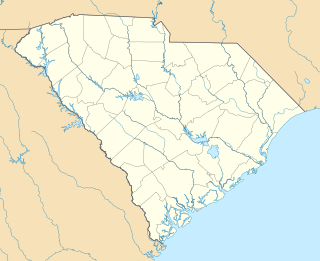 W
WThe Battle of Congaree Creek was a four-hour action that took place in the waning days of the American Civil War, fought in Lexington County, South Carolina, on February 15, 1865, just south of Columbia on the site of the former town of Granby.
 W
WThe Battle of Cumberland Church was fought on April 7, 1865, between the Union Army's II Corps of the Army of the Potomac and the Confederate Army of Northern Virginia during the Appomattox Campaign of the American Civil War.
 W
WThe town of Dedham, Massachusetts participated in the American Civil War primarily through the 630 men who served in the United States Armed Forces during the war. A total of 46 men would die in the war, including in battle, from disease, from wounds sustained in battle, and in prisoner of war camps. The Town of Dedham supported the soldiers and their families both through appropriations raised by taxes, and through donations of supplies sent to the front lines.
 W
WThe Battle of Dingle's Mill was an American Civil War battle that took place near Sumterville, Sumter County, South Carolina.
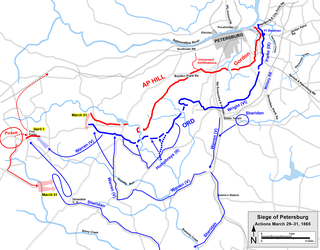 W
WThe Battle of Dinwiddie Court House was fought on March 31, 1865, during the American Civil War at the end of the Richmond-Petersburg Campaign and in the beginning stage of the Appomattox Campaign. Along with the Battle of White Oak Road which was fought simultaneously on March 31, the battle involved the last offensive action by General Robert E. Lee's Confederate Army of Northern Virginia attempting to stop the progress of Lieutenant General Ulysses S. Grant's Union Army. Grant's forces were moving to cut the remaining Confederate supply lines and to force the Confederates to extend their defensive lines at Petersburg, Virginia and Richmond, Virginia to the breaking point, if not to force them into a decisive open field battle.
 W
WThe Battle of Ebenezer Church was a battle that was fought in Stanton, Alabama near Plantersville, Alabama between Union Army cavalry under Brigadier General and Brevet Major General of volunteers James H. Wilson and Confederate States Army cavalry under Major General Nathan Bedford Forrest on April 1, 1865 during Wilson's Raid into Alabama in the final full month of the American Civil War.
 W
WThe Battle of Five Forks was fought on April 1, 1865, southwest of Petersburg, Virginia, around the road junction of Five Forks, Dinwiddie County, at the end of the Siege of Petersburg, near the conclusion of the American Civil War.
 W
WThe Battle of Fort Blakeley took place from April 2 to April 9, 1865 in Baldwin County, Alabama, about 6 miles (9.7 km) north of Spanish Fort, AL, as part of the Mobile Campaign of the American Civil War. At the time, Blakeley, Alabama had been the county seat of Baldwin County.
 W
WThe Second Battle of Fort Fisher was a successful assault by the Union Army, Navy and Marine Corps against Fort Fisher, south of Wilmington, North Carolina, near the end of the American Civil War in January 1865. Sometimes referred to as the "Gibraltar of the South" and the last major coastal stronghold of the Confederacy, Fort Fisher had tremendous strategic value during the war, providing a port for blockade runners supplying the Army of Northern Virginia.
 W
WThe Battle of Fort Myers was fought on February 20, 1865, in Lee County, Florida during the last months of the American Civil War. This small engagement is known as the "southernmost land battle of the Civil War."
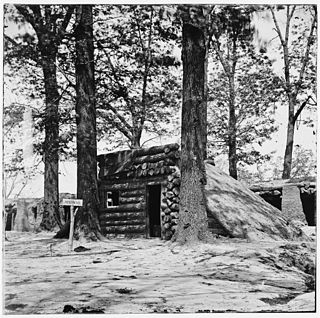 W
WThe Battle of Fort Stedman, also known as the Battle of Hare's Hill, was fought on March 25, 1865, during the final weeks of the American Civil War. The Union Army fortification in the siege lines around Petersburg, Virginia, was attacked in a pre-dawn Confederate assault by troops led by Maj. Gen. John B. Gordon. The attack was the last serious attempt by Confederate troops to break the Siege of Petersburg. After an initial success, Gordon's men were driven back by Union troops of the IX Corps commanded by Maj. Gen. John G. Parke.
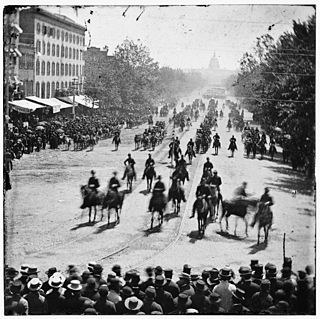 W
WThe Grand Review of the Armies was a military procession and celebration in the national capital city of Washington, D.C., on May 23–24, 1865, following the Union victory in the American Civil War (1861–1865). Elements of the Union Army in the United States Army paraded through the streets of the capital to receive accolades from the crowds and reviewing politicians, officials, and prominent citizens, including United States President Andrew Johnson, a month after the assassination of United States President Abraham Lincoln.
 W
WThe Harmony Skirmish was a small engagement of the American Civil War between Confederate forces under Colonel John Mosby and Union forces under Colonel Marcus Reno on March 21, 1865 near the village of Harmony in Loudoun County, Virginia. A union raiding party, that was sent into Loudoun County to eliminate Confederate partisans, was ambushed by Mosby's Rangers near the village of Harmony. After inflicting light casualties on the Federals, the Rangers were unable to drive off the numerically superior and better equipped force and were compelled to withdraw. The skirmish, which was the last major action of the war within Loudoun, was tactically inconclusive.
 W
WThe Battle of Hatcher's Run, also known as Dabney's Mill, Armstrong's Mill, Rowanty Creek, and Vaughn Road, fought February 5–7, 1865, was one in a series of Union offensives during the siege of Petersburg, aimed at cutting off Confederate supply traffic on Boydton Plank Road and the Weldon Railroad west of Petersburg, Virginia.
 W
WThe Battle of High Bridge refers to two engagements fought on April 6, 1865 and April 7, 1865, near the end of the Appomattox Campaign of the American Civil War about 4 miles (6.4 km) northeast of Farmville, Virginia. The first battle is often the one identified as the Battle of High Bridge.
 W
WThe Battle of Munford took place in Munford, Alabama, on Sunday, April 23, 1865, during the raid through the state by 1,500 Union Army cavalrymen under General John T. Croxton, part of the force participating in Wilson's Raid. The Battle of Munford and a minor action at Hendersonville, North Carolina on the same day were the last battles of the American Civil War east of the Mississippi River.
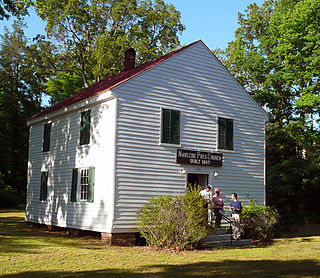 W
WThe Battle of Namozine Church, Virginia was an engagement between Union Army and Confederate States Army forces that occurred on April 3, 1865 during the Appomattox Campaign of the American Civil War. The battle was the first engagement between units of General Robert E. Lee's Confederate Army of Northern Virginia after that army's evacuation of Petersburg and Richmond, Virginia on April 2, 1865 and units of the Union Army under the immediate command of Maj. Gen. Philip Sheridan, who was still acting independently as commander of the Army of the Shenandoah, and under the overall direction of Union General-in-Chief Lt. Gen. Ulysses S. Grant. The forces immediately engaged in the battle were brigades of the cavalry division of Union Brig. Gen. and Brevet Maj. Gen. George Armstrong Custer, especially the brigade of Colonel and Brevet Brig. Gen. William Wells, and the Confederate rear guard cavalry brigades of Brig. Gen. William P. Roberts and Brig. Gen. Rufus Barringer and later in the engagement, Confederate infantry from the division of Maj. Gen. Bushrod Johnson.
 W
WThe Battle of Natural Bridge was fought during the American Civil War in what is now Woodville, Florida near Tallahassee on March 6, 1865. A small group of Confederate troops and volunteers, which included teenagers from the nearby Florida Military and Collegiate Institute that would later become Florida State University, protected by breastworks, prevented a detachment of United States Colored Troops from crossing the Natural Bridge on the St. Marks River.
 W
WThe Battle of Palmito Ranch, also known as the Battle of Palmito Hill, is considered by some criteria as the final battle of the American Civil War. It was fought May 12 and 13, 1865, on the banks of the Rio Grande east of Brownsville, Texas, and a few miles from the seaport of Los Brazos de Santiago, at the southern tip of Texas. The battle took place more than a month after the general surrender of Confederate forces to Union forces at Appomattox Court House, which had since been communicated to both commanders at Palmito, and in the intervening weeks the Confederacy had collapsed entirely, so it could also be classified as a postwar action.
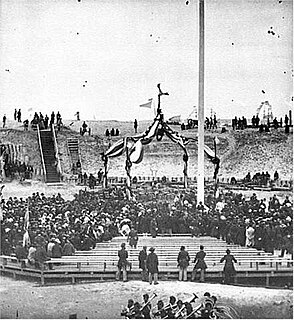 W
WRaising the Flag at Fort Sumter was a ceremony—a newspaper called it a "performance"—that took place at Fort Sumter, in the harbor of Charleston, South Carolina, on Friday, April 14, 1865, four years almost to the day after the Fort Sumter Flag was lowered at the beginning of the American Civil War. General Lee had surrendered at Appomattox on Sunday, April 9. It was intended to symbolically mark and celebrate the Union victory and the end of the war.
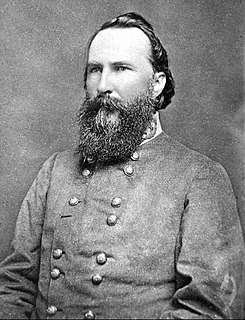 W
WThe Battle of Rice's Station was a minor engagement in Appomattox Campaign of the American Civil War that was fought at the same time as the Battle of Sailor's Creek on April 6, 1865. In the early morning of April 6, Confederate Lieutenant General James Longstreet's command reached Rice's Station, Virginia on the South Side Railroad. As Longstreet's corps was the first to reach Rice's Station after Lee moved his army west from Amelia Springs, Virginia, they awaited the remainder of the army, most of which ended up being delayed at the Battle of Sailor's Creek.
 W
WThe Battle of Sailor's Creek was fought on April 6, 1865, near Farmville, Virginia, as part of the Appomattox Campaign, near the end of the American Civil War. It was the last major engagement between the Confederate Army of Northern Virginia, commanded by General Robert E. Lee and the Army of the Potomac, under the overall direction of Union General-in-Chief Lieutenant General Ulysses S. Grant.
 W
WThe Battle of Selma, Alabama, formed part of the Union campaign through Alabama and Georgia, known as Wilson's Raid, in the final full month of the American Civil War.
 W
WStoneman's raid in 1865 was a military campaign in the Upper South during the American Civil War, by Union cavalry troops led by General George Stoneman, in the region of eastern Tennessee, western North Carolina and southwestern Virginia. It began on March 23, 1865, in Knoxville, Tennessee. The Union soldiers were tasked with orders to "dismantle the country". They headed east into North Carolina, destroying towns and plundering along the way, then headed north into Virginia on April 2, where they destroyed 150 miles of railroad track belonging to the Virginia & Tennessee Railroad. On April 9, 1865, they re-entered North Carolina and traveled south to the twin towns of Winston and Salem, now Winston-Salem, and on to High Point.
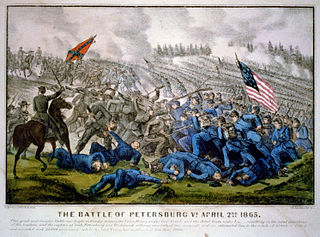 W
WThe Third Battle of Petersburg, also known as the Breakthrough at Petersburg or the Fall of Petersburg, was fought on April 2, 1865, south and southwest of Petersburg, Virginia, at the end of the 292-day Richmond–Petersburg Campaign and in the beginning stage of the Appomattox Campaign near the conclusion of the American Civil War. The Union Army under the overall command of General-in-Chief Lieutenant General Ulysses S. Grant, launched an assault on General Robert E. Lee's Confederate Army of Northern Virginia's Petersburg, Virginia trenches and fortifications after the Union victory at the Battle of Five Forks on April 1, 1865. As a result of that battle the Confederate right flank and rear were exposed. The remaining supply lines were cut and the Confederate defenders were reduced by over 10,000 men killed, wounded, taken prisoner or in flight.
 W
WThe Battle of Trent's Reach was one of the final major naval battles of the American Civil War. Beginning on January 23, 1865, a powerful flotilla of Confederate warships bombarded Fort Brady along the James River and engaged four Union Navy ships with the intention of breaking through the blockade to attack City Point, the base of General Ulysses S. Grant who was besieging Petersburg, Virginia. After two days of fighting, the rebels withdrew back up the river without completing their objectives.
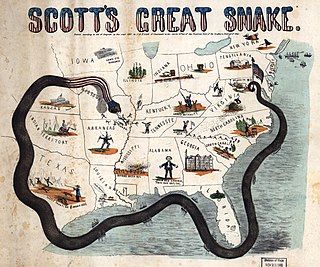 W
WThe Union blockade in the American Civil War was a naval strategy by the United States to prevent the Confederacy from trading.
 W
WThe Battle of Wilmington was fought February 11–22, 1865, during the American Civil War, mostly outside the city of Wilmington, North Carolina, between the opposing Union and Confederate Departments of North Carolina. The Union victory in January in the Second Battle of Fort Fisher meant that Wilmington, 30 miles upriver, could no longer be used by the Confederacy as a port. It fell to Union troops after they overcame Confederate defenses along the Cape Fear River south of the city. The Confederate General Braxton Bragg burned stores of tobacco and cotton, among other supplies and equipment, before leaving the city, to prevent the Union from seizing them.